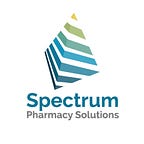What is a good PBM?
Employers are increasingly being pulled in many directions when it comes to benefits. Maintaining employee engagement and happiness while controlling expenses is a significant challenge for many organizations. This is not an easy task, especially when it comes to the rising cost of benefits.
Pharmacy benefits are the most frequently used benefits in your plan and the fastest growing in terms of cost. Choosing the right Pharmacy Benefit Manager (PBM) is therefore essential if you want to satisfy your customers while controlling your expenses.
PBMs have a significant impact on the price of prescription drugs, perhaps one of their significant advantages. Three major brands (CVS Caremark, OptumRx from United Healthcare, and Express Scripts) are estimated to control at least 80–85% of the market.
Their position in the market gives these companies considerable leverage to negotiate lower prices with pharmaceutical companies. These conversations can also lead to increased use of generics, reducing overall plan costs and out-of-pocket payments for plan members.
Pharmacy Benefit Managers (PBMs) act as your advocates, helping consumers and payers reduce prescription drug costs in the healthcare system.
Pharmacy Benefit Managers (PBMs) oversee the prescription drug plans of the more than 266 million Americans who have health insurance through a variety of sources, such as commercial health plans, employer-sponsored plans, insured, union-sponsored plans, Medicare Part D plans, Federal Employees Health Benefits Program (FEHBP), state government employee plans, and Medicaid-administered plans. Prescription PBM savings over the next decade will exceed $1 trillion for health plans and their members.
A person who oversees a pharmacy benefits program is known as a pharmacy benefits manager (PBM). PBMs, also known as Pharmacy Benefit Managers, are essential to the healthcare system. Contracts are signed with all key players in the pharmaceutical supply chain, from drug manufacturers and insurance companies to retail pharmacies. First, PBMs were formed to save insurance companies time in processing prescription drugs. PBMs were quick to see the potential for expansion. These services are now available to help people achieve their health goals and manage their drug costs.
The services offered by PBMs are vast. In addition, there are many other options for mail-order pharmacies: Automatic machines package and label prescriptions after they have been verified by a pharmacist. The drugs are then shipped to the patients’ homes. Patients with chronic conditions with few other options will benefit from this feature. PBM forms, which are lists of pharmaceutical products covered by insurance, are also produced by PBMs. If you have an insurance plan, the forms determine how much you will have to pay for your prescriptions. That is, PBMs determine which drugs people should take by limiting their choices. Since off-the-shelf prescriptions are the most affordable, doctors are more likely to prescribe them, even if they are not the best option for the patient. Is it good enough? The price is not essential, but it is necessary.
One of the essential roles of pharmacy benefit managers is to negotiate contracts with pharmaceutical companies. With more than 266 million customers, PBMs can enjoy volume discounts similar to those seen at Costco because they serve a large portion of the population. PBMs receive reimbursement equal to a percentage of the cost of the drug from pharmaceutical manufacturers in exchange for listing their prescriptions on the PBM formulary. It’s a win-win situation for everyone involved. Adding a drug to a PBM’s formulary increases revenue for both the manufacturer and the PBM. PBMs are encouraged by discounts to give preference to a specific product from a drug manufacturer. As a result, PBMs may choose to include the more expensive drug on their formulary, as higher reimbursement equates to more profit for PBMs.
First of all, I would like to talk about refunds as a whole. In another way, a refund is a marketing strategy used to persuade customers to make a purchase. Consumers are responsible for the difference between what they paid and what they were reimbursed.
Was he buying new tires for his car or a year’s supply of contact lenses? Have you ever issued a refund? Refunds for these products are standard. What is your position on vouchers? Do you use coupons to save money at the supermarket? Isn’t it time to save $1 on laundry detergent? If so, you also received a discount. What’s wrong with that?
Everyone wants to get their hands on drug reimbursement. Some of the savings would benefit PBMs, health insurers and consumers, who feel they should be passed on to them in the form of lower premiums and out-of-pocket costs.
Therefore, the government is proposing to eliminate all prescription reimbursements, eliminating the need for expensive drugs. The no refund approach has not been tested in the real world. Clearly, the whole plan is flawed, but is PBM the only culprit?
Do you think a satisfactory solution will be found? Given that three of the largest PBMs have been purchased or acquired by health insurers, chances are we will. CVS bought Aetna, Cigna bought Express Scripts, and United Healthcare bought Optum.
Some innovative solutions can be developed due to this change in market and business strategy. To significantly reduce drug costs, these newly merged companies must put the customer first. With the help of providers and forms based on the best value for consumers, PBMs can and will have an impact.
